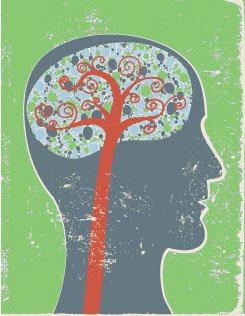To Enable Learning, Put (Emotional) Safety First
Building a secure, supportive classroom environment is essential for young brains to learn.

It may not be rocket science, but it sure is neuroscience: Happy learners are healthy learners.
While this may seem like (ahem) a no-brainer, there is a good amount of neurological evidence to promote the idea that if students do not feel comfortable in a classroom setting, they will not learn. Physiologically speaking, stressed brains are not able to form the necessary neural connections.
Some of the strongest findings in neuroscience -- findings that were suspected decades ago but only recently well-represented using functional magnetic resonance imaging (fMRI) -- tell us why that is: There are certain parts of the brain responsible for emotions. The amygdala, for instance, processes emotions, stores the memories of emotional reactions, and reacts so aggressively to stress that it will physically prevent information from reaching the centers of the brain necessary for absorbing new knowledge.
Fear and Frustration Get in the Way
A study published in the journal Neurobiology of Learning and Memory in 2002, for one, suggested that the amygdala is indeed the part of the brain involved in mediating emotional arousal -- and it has a strong impact on learning. Several studies before and since have confirmed these types of findings.
Even feelings like embarrassment, boredom, or frustration -- not only fear -- can spur the brain to enter the proverbial "fight or flight" mode. The amygdala goes into overdrive and gets in the way of the parts of the brain that can store memories, says neurologist and former classroom teacher Judy Willis, who has studied this phenomenon extensively.
Therefore, it makes sense -- on many levels -- to cultivate the learning atmosphere as much as the learning itself. "Reducing stress and establishing a positive emotional climate in the classroom is arguably the most essential component of teaching," writes Mariale Hardiman, a former teacher and administrator and current assistant dean of the Urban Schools Partnership at Johns Hopkins University's School of Education.
Brain-Soothing Tips
Judy Willis points to the following strategies for helping students, and their brains, feel comfortable:
- Make the classroom stress free. Lighten the mood by making jokes and spurring curiosity; create a welcoming and consistent environment through daily rituals, songs, or games; give students frequent opportunities to ask questions and engage in discussions without judgment; and determine achievable challenges for each learner.
- Encourage participation, not perfection. A classroom in which mistakes are encouraged is a positive learning environment, both neurologically and socially speaking. As cognitive neuroscientist and educational psychologist Mary Helen Immordino-Yang and Harvard doctoral candidate Matthias Faeth write, "Students will allow themselves to experience failure only if they can do so within an atmosphere of trust and respect."
- Practice active listening. "Focus on what students are trying to say," writes Willis. This kind of positive reinforcement from the get-go allows students to let their guard down (known in neuro-speak as calming their "affective filters"). Listening to students in general, and listening to their intentions in particular, can help relax anxious brains.